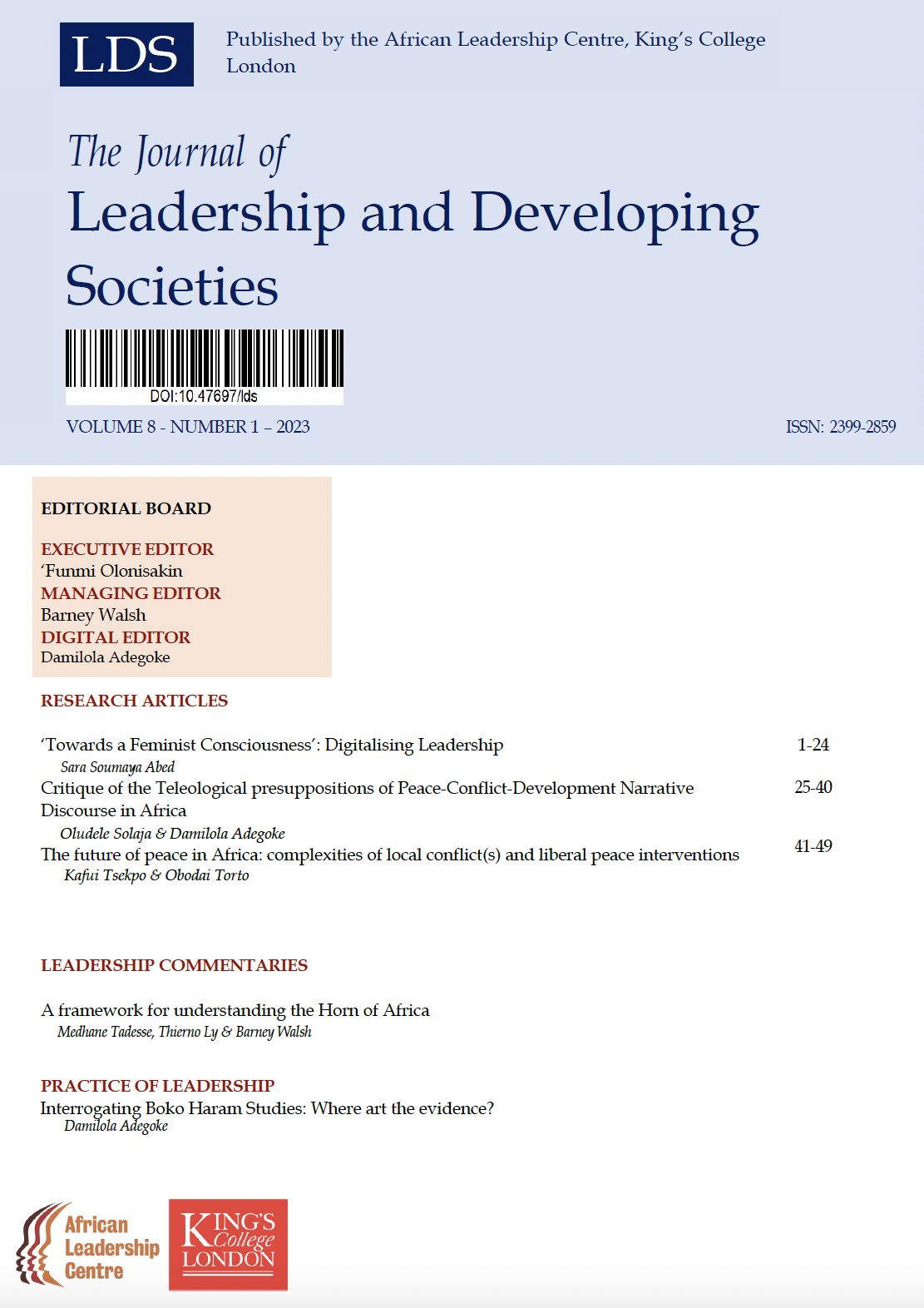Stockholm syndrome re-examined: Understanding the relationship between radicalization and building mutuality within Boko Haram in Northern Nigeria
DOI:
https://doi.org/10.47697/lds.35370135Keywords:
Boko Haram, Stockholm Syndrome, Leadership, Mutuality, NigeriaAbstract
This study re-examines the phenomenon of Stockholm syndrome within the context of Boko Haram, aiming to understand the intricate relationship between radicalization leading to extremism and mutuality building within the group. Conventional interpretations of Stockholm syndrome, where a clear emotional bond develops between the kidnapper and the kidnapped, fall short in explaining the complexities observed within Boko Haram. While victims may engage in the group's activities and even become members over time, this does not necessarily indicate an emotional bond as defined by traditional Stockholm syndrome. Instead, it points towards a process of mutuality building, which facilitates radicalization through various entry points, from ideological bond, coercion to strategic recruitment. Boko Haram's extremist and ideological motivations underpin its operations, but radicalization within its ranks often stems from a blend of social, ideological, political, and economic factors rather than emotional attachment, although in some instances that might be the case. The group's ability to retain members hinges on its leadership's adept exploitation of vulnerabilities, offering financial incentives, sustenance, and a semblance of security to those ensnared by chronic poverty and insecurity in Northern Nigeria. This nuanced understanding of mutuality building sheds light on how individuals become deeply embedded in the group's activities, driven by pragmatic considerations rather than emotional bonds with their leaders. The findings underscore the significance of leadership dynamics within Boko Haram and highlight the necessity of differentiating between mutuality building and Stockholm syndrome in the study of terrorist organisations. This distinction has profound implications for developing effective counterterrorism strategies. Future research should explore counterterrorism through a leadership framework and conduct comparative studies with other terrorist organisations to uncover commonalities and differences in recruitment tactics and leadership dynamics, ultimately contributing to the creation of comprehensive counterterrorism policies and strategies.



